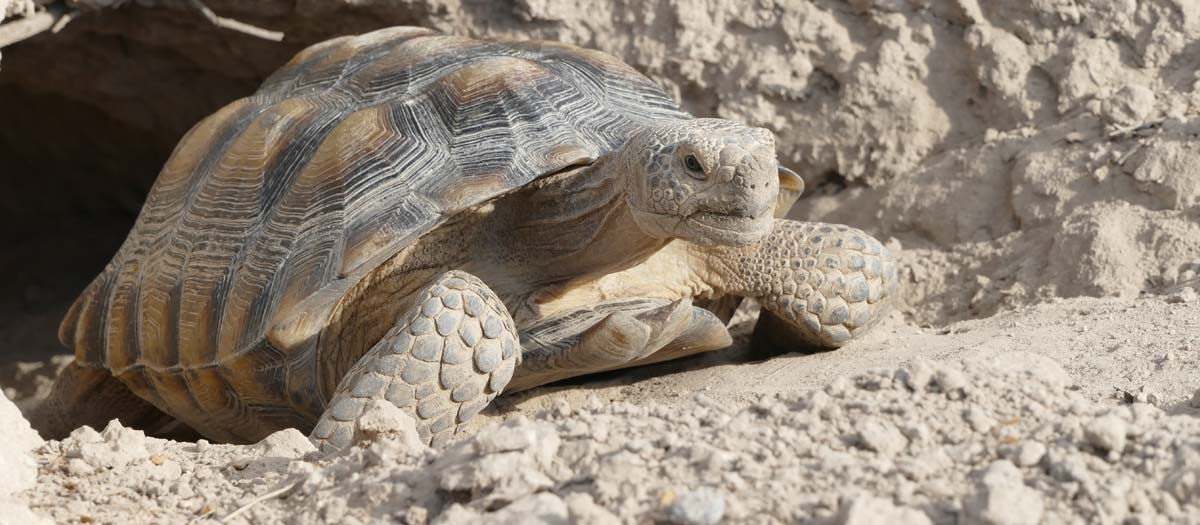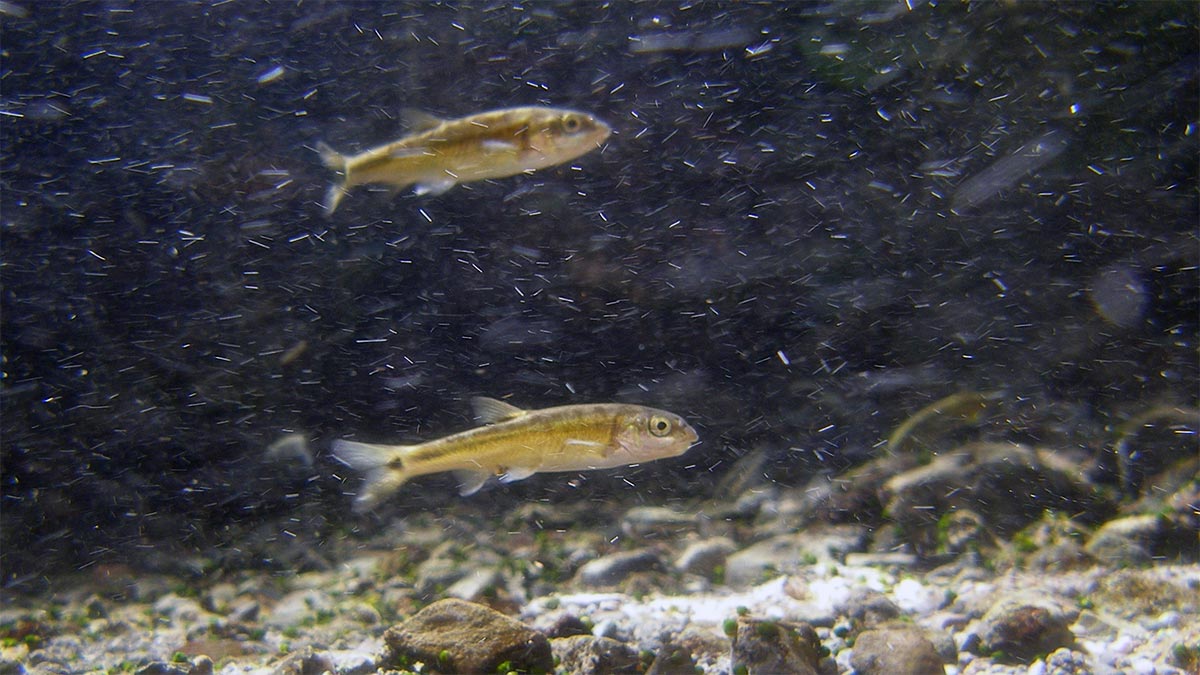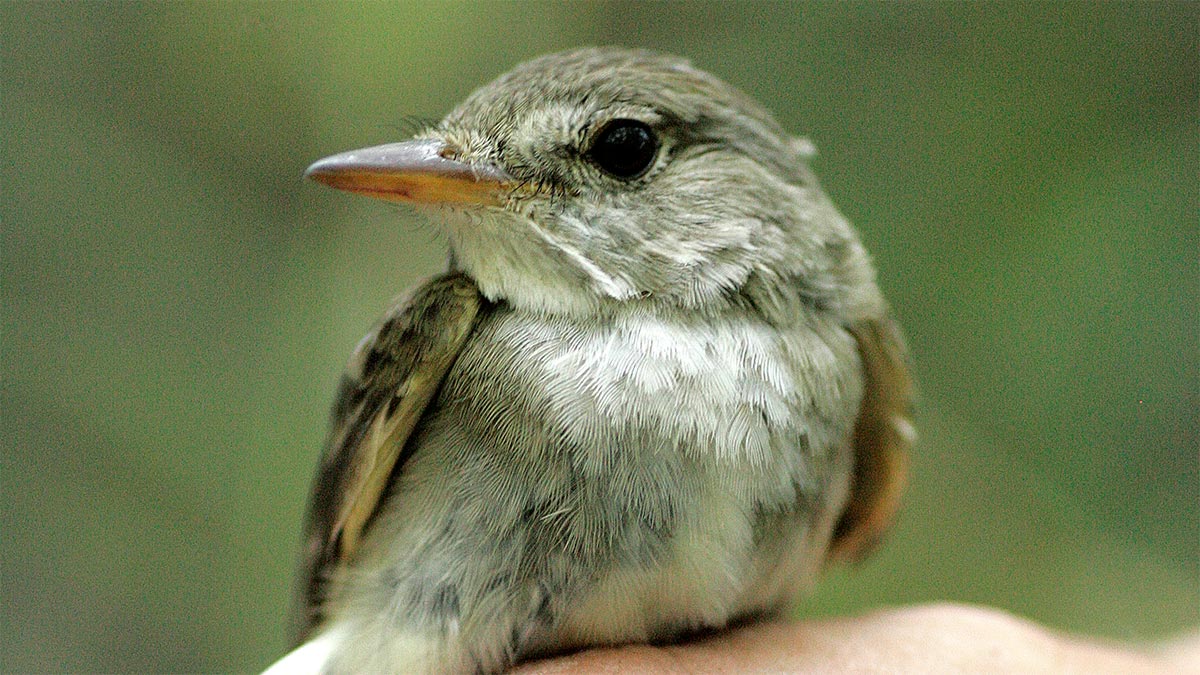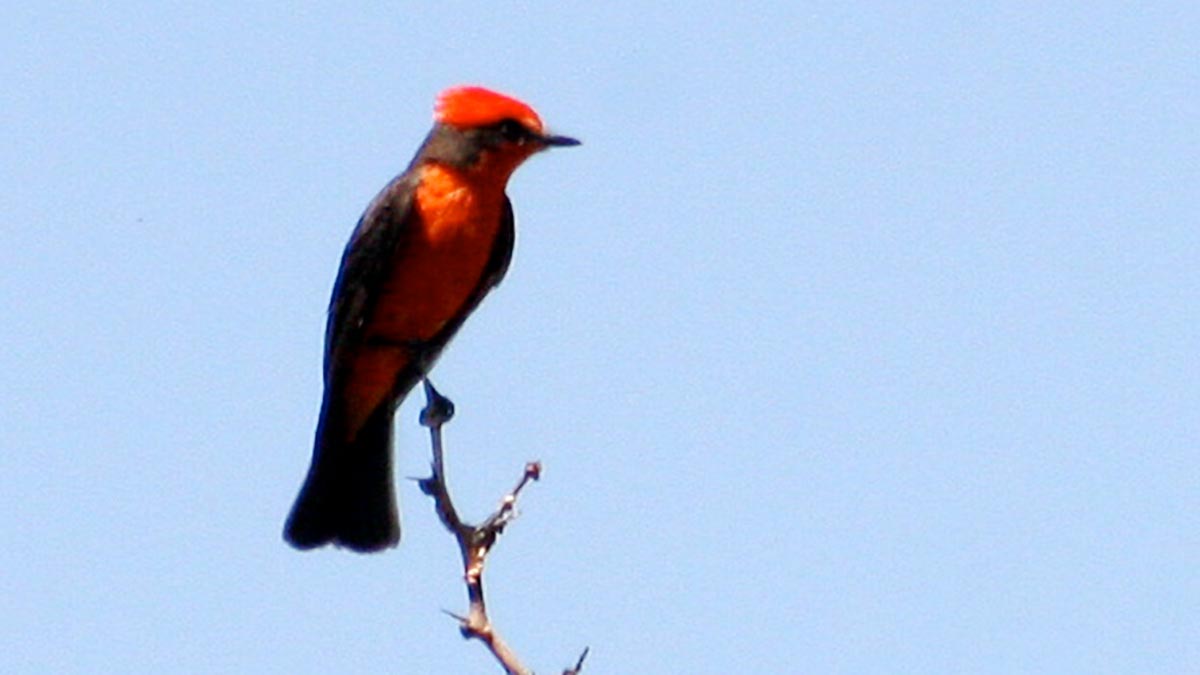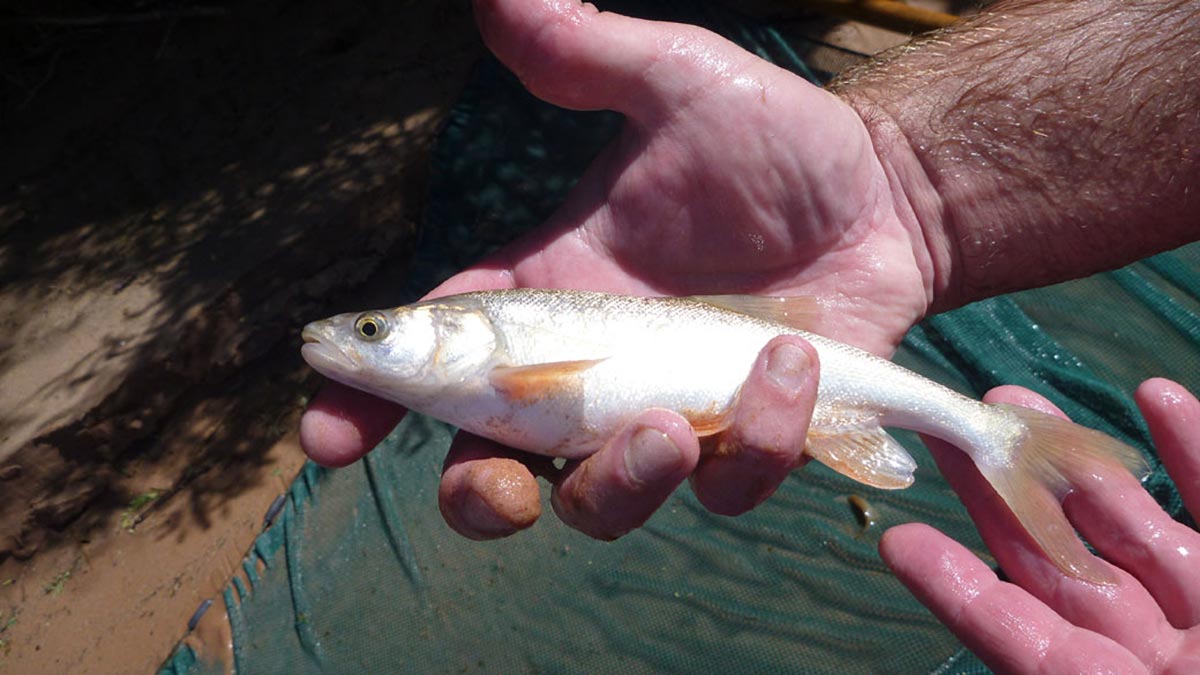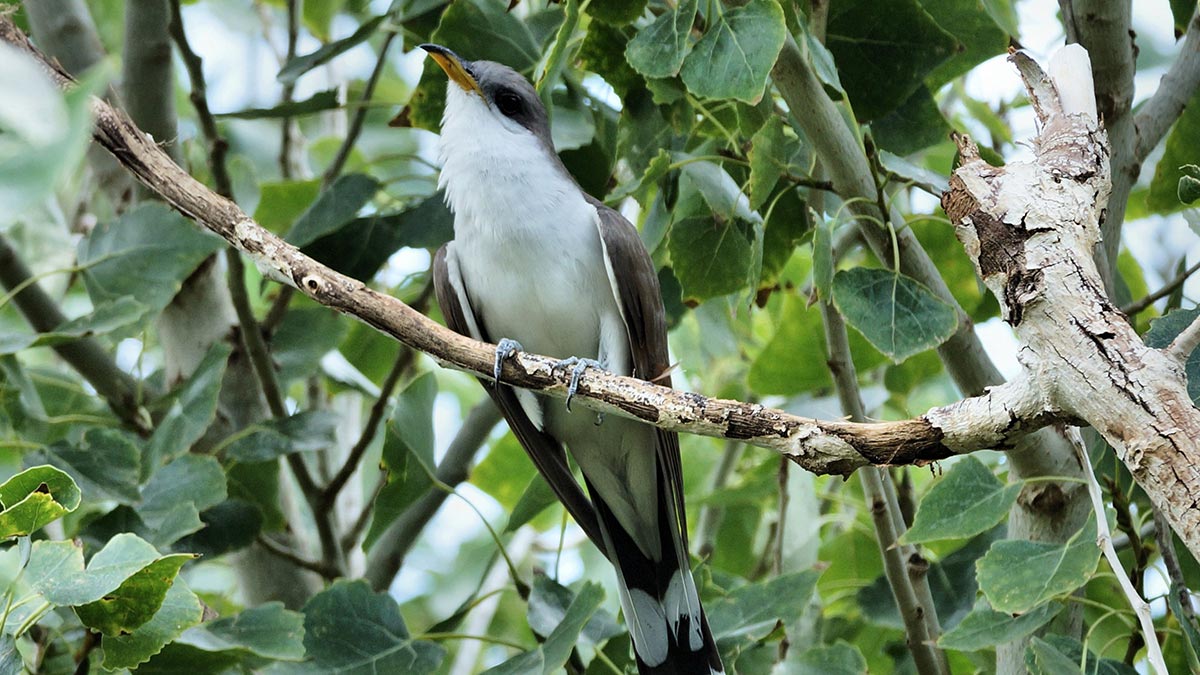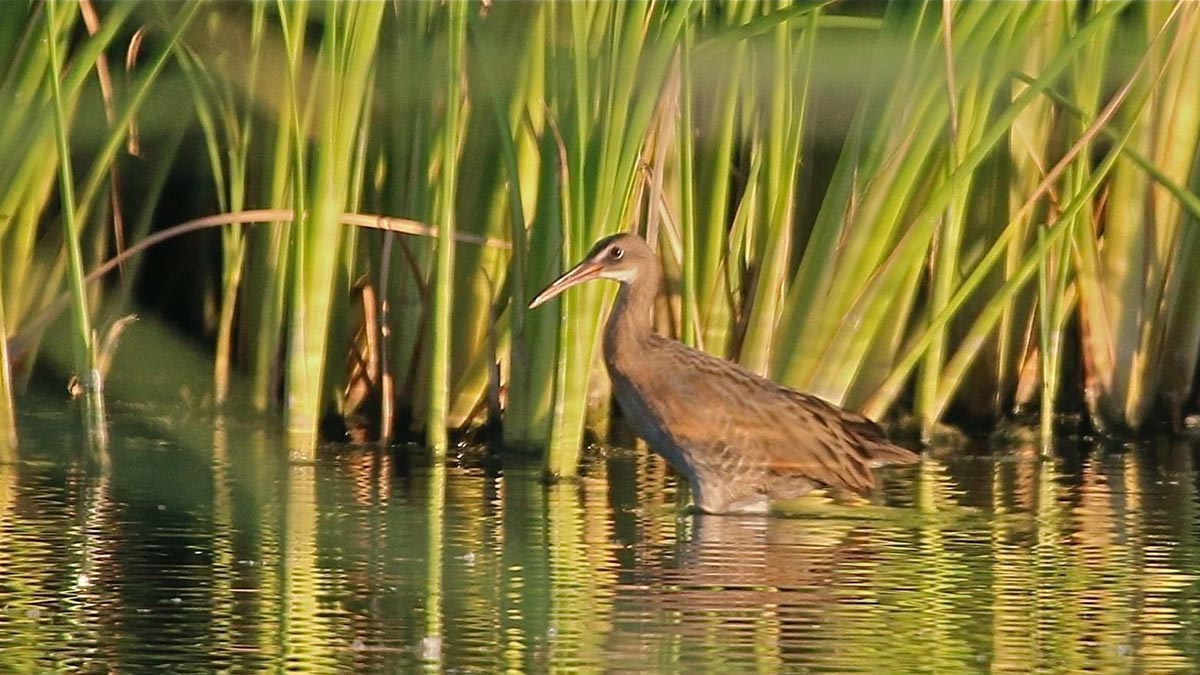The SNWA collaborates with members, partners, and federal, state, and local agencies to manage water resources and promote sustainability. Its efforts include tree planting, species recovery, and habitat conservation to minimize environmental impacts during water resource development and facility operations.
In compliance with laws like the Endangered Species Act (ESA), National Environmental Policy Act (NEPA), and Clean Water Act, the SNWA employs best practices to reduce its environmental footprint and protect resources for future generations.
Species SNWA has been involved in protecting
Moapa dace
Razorback sucker
Southwestern willow flycatcher
Vermilion flycatcher
Virgin river chub
Western yellow bill cuckoo
(Photo: Rod Bailey)
Yuma ridgway's rail
(Photo: Aaron Ambos)
Colorado River
Human alterations on the Colorado River, including changes to riparian, wetland and aquatic habitats, have affected the river's ecosystem, both in the United States and in Mexico. Today, there are several native fish, birds and other wildlife species listed as threatened or endangered under the ESA.
Lower Colorado River multi-species conservation
The Lower Colorado River Multi-Species Conservation Program (LCRMSCP) is a coordinated, multi-agency effort to protect the species and habitat of the Lower Colorado River region. The Water Authority is a nonfederal partner of the LCRMSCP, which is implemented by the Bureau of Reclamation.
Goals of the program include:
- Conserving the habitat and working toward recovery of threatened and endangered species
- Reducing the likelihood of additional species listings
- Accommodating current water diversions and power production
- Optimizing opportunities for future water and power development
- Providing the basis for incidental take authorizations
Colorado River Basin Water Supply and Demand Study
The SNWA is part of the Environmental and Recreational Flows Workgroup, formed after the Colorado River Basin Water Supply and Demand Study, to identify opportunities benefiting water-dependent ecological systems, power generation, and recreation.
Binational Collaboration
The U.S. and Mexico, through interpretive minutes to the 1944 Water Treaty, have established a framework for environmental cooperation in Mexico, including studies on the riparian and estuarine ecology of the Colorado River limitrophe and Delta.
Since 2010, the SNWA has been part of the Environmental Work Group, fostering collaboration between the two countries on environmental improvements, including initiatives from minutes 319 and 323 on environmental flow deliveries in the limitrophe and Delta.
Glen Canyon Dam Adaptive Management Work Group
The SNWA actively participates in the Glen Canyon Dam Adaptive Management Work Group, balancing interests in water deliveries, downstream water quality, the threatened humpback chub, recreation, Native American perspectives, and hydropower.
Muddy River
The Muddy River and its tributaries provide habitat for rare species, including the endangered Moapa dace, southwestern willow flycatcher, Yuma Ridgway’s rail, and the threatened western yellow-billed cuckoo. It is also habitat for the Virgin River chub, which although not listed on the Muddy River, is listed as endangered on the Virgin River.
Since 2004, the SNWA has supported studies and conservation efforts, partnering with agencies and stakeholders to protect these species and their habitats, including work at the Warm Springs Natural Area.
Warm Springs Natural Area
Located near Moapa, the 1,220-acre Warm Springs Natural Area provides critical habitat for sensitive species.
Virgin River
The Virgin River is one of the largest riparian corridors in the desert Southwest. Within Nevada, the lower Virgin River is home to the federally endangered woundfin, Virgin River chub, southwestern willow flycatcher, Ridgway's rail, and the federally threatened western yellow-billed cuckoo.
The SNWA and other resource management partners have supported fish and wildlife monitoring activities in the lower Virgin River for decades. This work has provided valuable information, such as understanding the long-term dynamics of the fish community and the success of fish stocking experiments.
Clark County
The SNWA participates in a number of environmental initiatives in Clark County to help protect and restore the environment, including the Clark County Multiple Species Habitat Conservation Plan (MSHCP) and Las Vegas Wash Comprehensive Adaptive Management Plan. These efforts directly affect the SNWA’s ability to operate facilities in Clark County and deliver high quality water to the community.
Multiple Species Habitat Conservation Plan
The Multiple Species Habitat Conservation Plan (MSHCP) was approved in 2001, and provides ESA coverage for 78 species, including the threatened desert tortoise (Gopherus agassizii). The key purpose of the MSHCP is to achieve a balance between the conservation and recovery of listed and sensitive species in Clark County and the orderly beneficial use of land to meet the needs of the growing population in Clark County. The SNWA actively participates in the MSHCP, which provides ESA coverage for its projects and facilities located on non-federal lands within the county.
Las Vegas Wash
The Las Vegas Wash plays an important role in our water quality, and it serves as a habitat for diverse plant and animal species. It is the primary channel through which the Las Vegas Valley's excess water returns to Lake Mead. Contributing approximately 2 percent of the water in Lake Mead, the water flowing through the Wash consists of urban runoff, shallow groundwater, storm water and releases from the valley's four water reclamation facilities.
